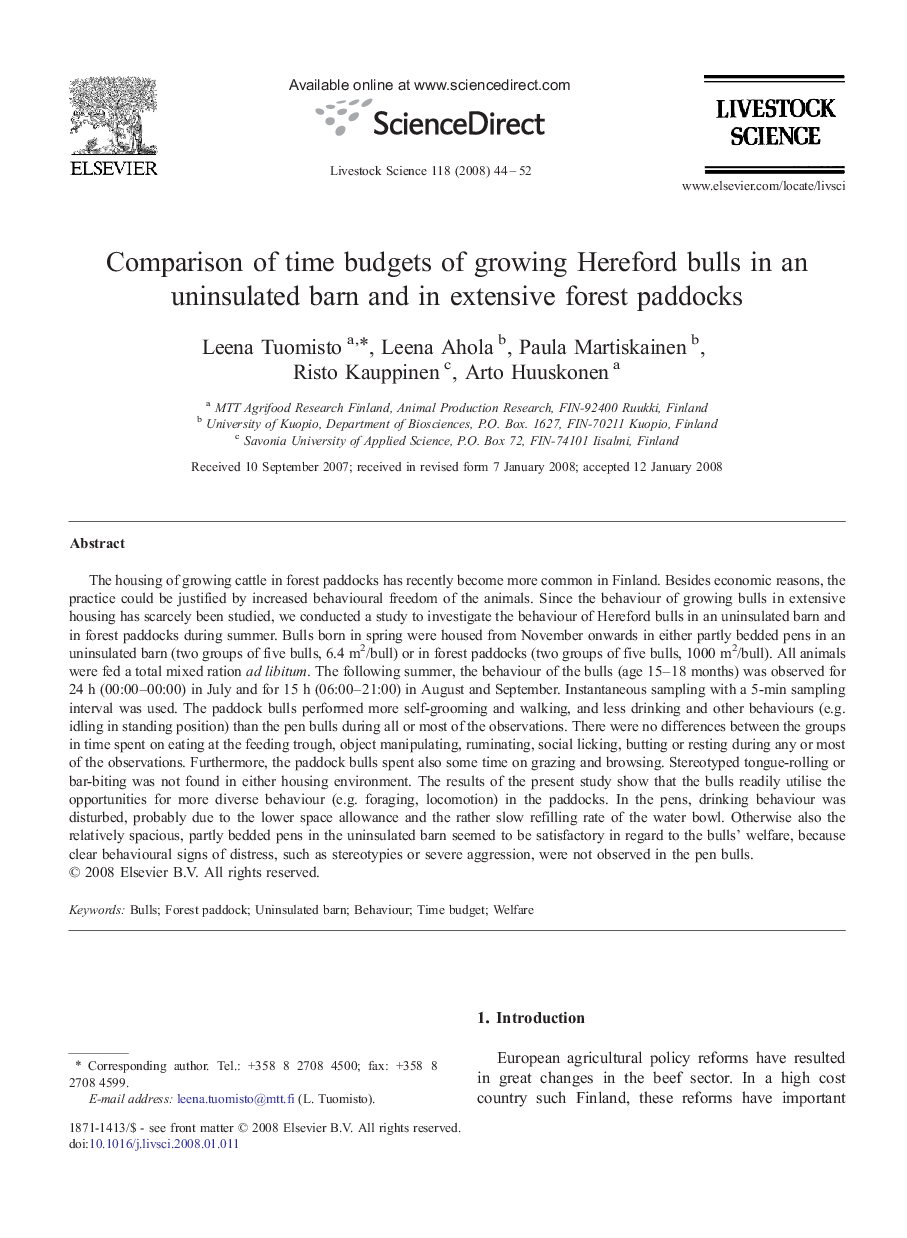| Article ID | Journal | Published Year | Pages | File Type |
|---|---|---|---|---|
| 2448557 | Livestock Science | 2008 | 9 Pages |
The housing of growing cattle in forest paddocks has recently become more common in Finland. Besides economic reasons, the practice could be justified by increased behavioural freedom of the animals. Since the behaviour of growing bulls in extensive housing has scarcely been studied, we conducted a study to investigate the behaviour of Hereford bulls in an uninsulated barn and in forest paddocks during summer. Bulls born in spring were housed from November onwards in either partly bedded pens in an uninsulated barn (two groups of five bulls, 6.4 m2/bull) or in forest paddocks (two groups of five bulls, 1000 m2/bull). All animals were fed a total mixed ration ad libitum. The following summer, the behaviour of the bulls (age 15–18 months) was observed for 24 h (00:00–00:00) in July and for 15 h (06:00–21:00) in August and September. Instantaneous sampling with a 5-min sampling interval was used. The paddock bulls performed more self-grooming and walking, and less drinking and other behaviours (e.g. idling in standing position) than the pen bulls during all or most of the observations. There were no differences between the groups in time spent on eating at the feeding trough, object manipulating, ruminating, social licking, butting or resting during any or most of the observations. Furthermore, the paddock bulls spent also some time on grazing and browsing. Stereotyped tongue-rolling or bar-biting was not found in either housing environment. The results of the present study show that the bulls readily utilise the opportunities for more diverse behaviour (e.g. foraging, locomotion) in the paddocks. In the pens, drinking behaviour was disturbed, probably due to the lower space allowance and the rather slow refilling rate of the water bowl. Otherwise also the relatively spacious, partly bedded pens in the uninsulated barn seemed to be satisfactory in regard to the bulls' welfare, because clear behavioural signs of distress, such as stereotypies or severe aggression, were not observed in the pen bulls.
